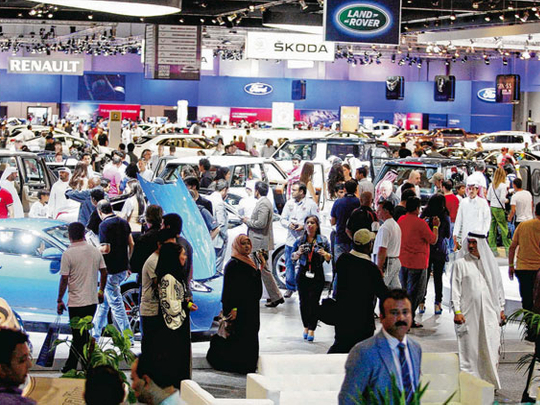
Dubai: It was a crash of epic proportions. The UAE’s automotive sector had to confront the double whammy of an immediate shrunken buyer base and a massive unsold inventory as the Lehman crisis took full hold in 2009. And that after recording its best year ever with 325,000 units sold the year earlier, with nothing more than a signature on the dotted line for the buyer to drive off in his vehicle of choice.
The 2008 party was built on excesses and the auto retail sector had all of 2009 and more to get over it. And there was the Central Bank which stepped in to make sure that car ownership in the UAE comes with enough caveats attached on the financing side.
But the auto sector did have to endure some trying times. The worst of it was the unsold inventory of the 2008-09 model year vehicles. Even heavy discounts failed to convince buyers, or at least initially. Dealerships were lucky if they could a faint trickle of buyer prospects during a week.
The market dropped by almost half in the first quarter of 2009, which continued for almost three quarters.
Inventory
“Due to the speed of the [downturn] hitting businesses and individuals in the UAE, it was almost impossible to ensure that the right amount of inventory was ordered,” said Alan Carpenter, general manager of sales and marketing at Al-Futtaim Motors.
“As a business, in normal times we look to keep 4-6 weeks of stock available with orders made up to three months in advance of delivery.”
But at the peak of the financial crisis — and there were images of brand new cars left unclaimed outside of the local airports as a testament to those times — inventory management could still be something of a hit-and-miss. Each additional day that vehicles were left unsold added up to the costs that dealerships had to bear, which added to the strain on their bottomline.
New cars
And then something happened. By mid-2010, the impression was that new car buyers were making a sustained return. It coincided with the time that the global auto industry itself was getting to grips with the post-Recession scene. New models were rushed into production while existing models were given new design and engineering flair as inducements for their eventual owners. It can be said unequivocally that the Great Recession unlocked a period of innovation in the auto industry that is unprecedented.
“Towards the end of 2009 and early 2010 we started to see improved footfall coupled with growing customer confidence,” said Neeraj Mahajan, CEO of Al Naboodah Commercial Group, which has the local import rights for Peugeot through Swaidan Trading Co. “We had a steady increase of 9 per cent in 2010 over 2009 and business further improved in 2011 with a significant jump of 29 per cent.”
In the UAE, local sentiments too had a part to play. “There were a number of reasons; a quick improvement in the economic growth; growth in the SME sector and [there was the] banking sector more willing to finance the purchase of vehicles,” said Carpenter.
“It was at this time that we started planning our newest, top-notch facilities across the UAE, such as Al Badia, to ensure that future demand could be accommodated once growth returned.”
Customer demand
Dealerships also reworked the basics of engagement. “We reviewed stock situations, preferred models within Peugeot’s range by customers and market demand,” said Mahajan. “However, Swaidan Trading Co’s management showed patience without becoming overly worried about the inventory situation.
“We held discussions with our principals to understand the vehicles in transit, new model introductions which would be of interest to Peugeot customers, explored with banks innovative finance packages and close communication with our bulk buyers were initiated to make progress towards moving the inventory.”
True, fleet operators did have a hand in getting car volumes back on track. With dealers willing to offer competitive deals, bulk operators used the opportunity to pad up their fleet strength at much favourable terms.
Dealerships also worked the re-export markets, particularly Africa, to dilute their inventory and get back to optimum stock levels.
Prospective buyers
On the retail side, the Central Bank made a strong intervention to make sure that 100 per cent financing on all purchases is done with. In 2011, it issued a requirement that all vehicle purchases should have a 20 per cent down payment. This is in effect even now, ensuring that prospective buyers can no longer get away with debt-fuelled indulgences.
In turn, dealerships worked to radically rework their auto financing plans, adding a great deal of depth in what was until then a static area.
“This increased measures of discipline among the auto-finance market and helped customers to review their financials before deciding on the purchase of a new car,” said Mahajan. “In the months thereafter, this saw a positive effect on innovation and services provided by car distributors, by offering finance packages relevant to prospective customers.”
By end 2011, the local automotive sector was firing on all wheels, an much revitalised from seeing through the crisis and learning lessons from it well. Last year saw volumes nudge past 300,000 for the first time after 2008 and this year the market is up by another all-cylinders firing 20 per cent plus.
Clearly, the auto sector has consigned the financial crisis and its fallout way behind on its horizon.











